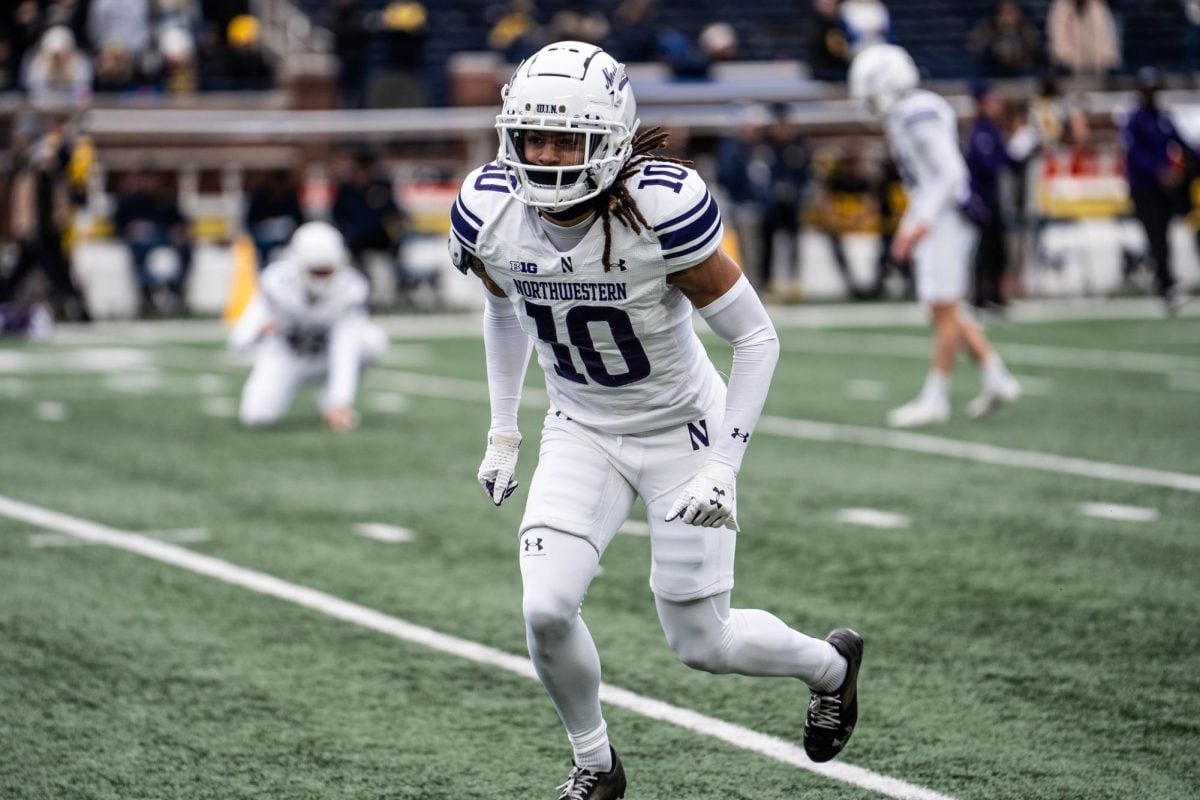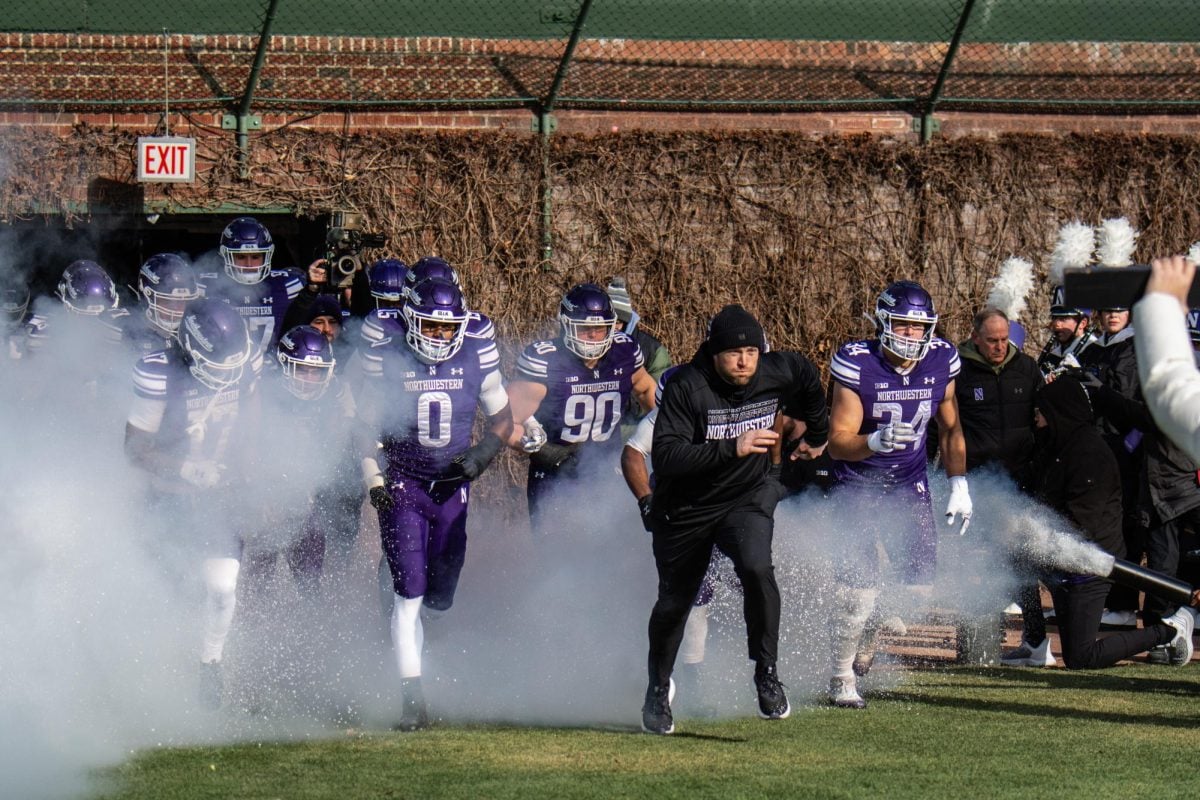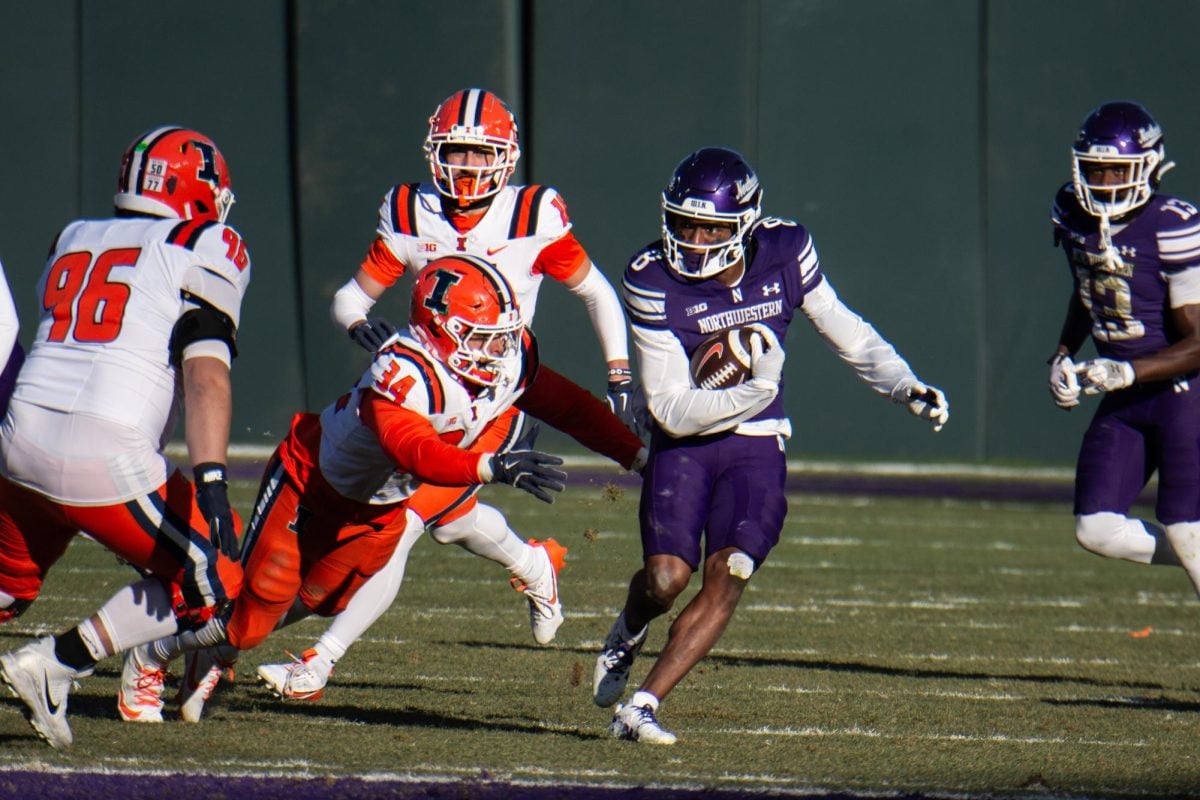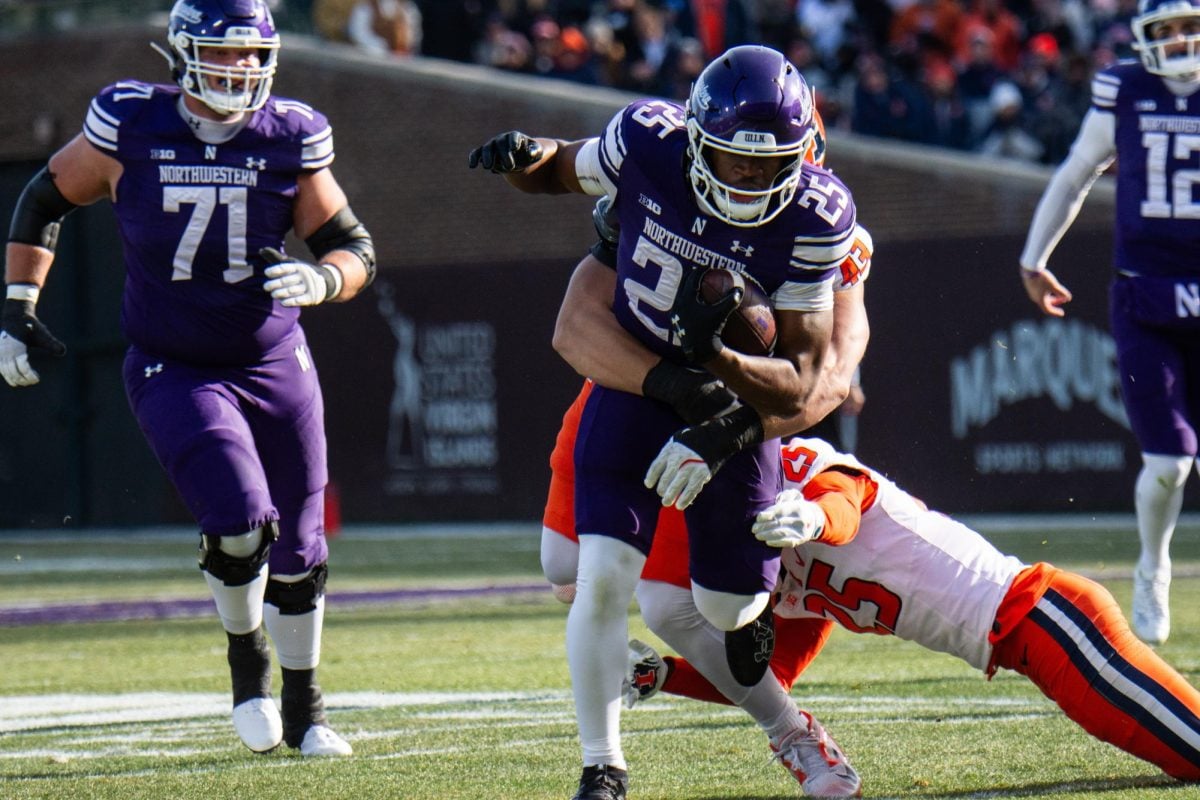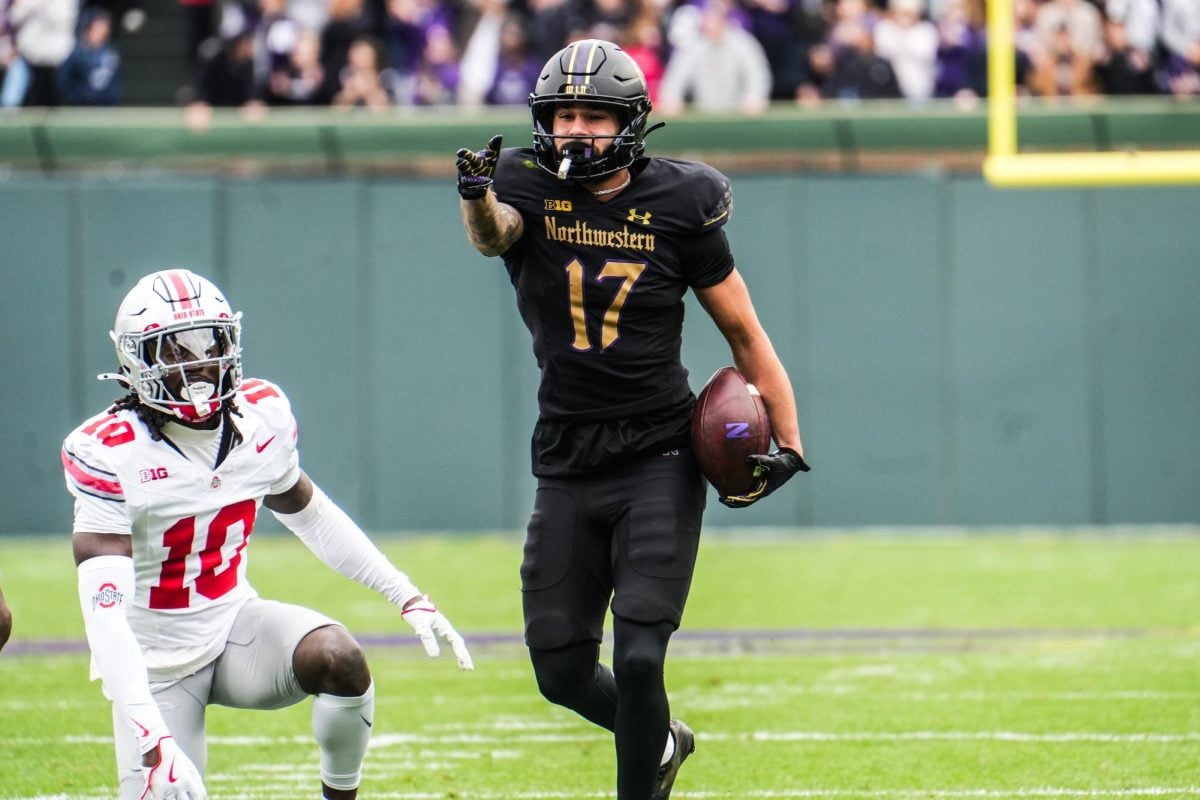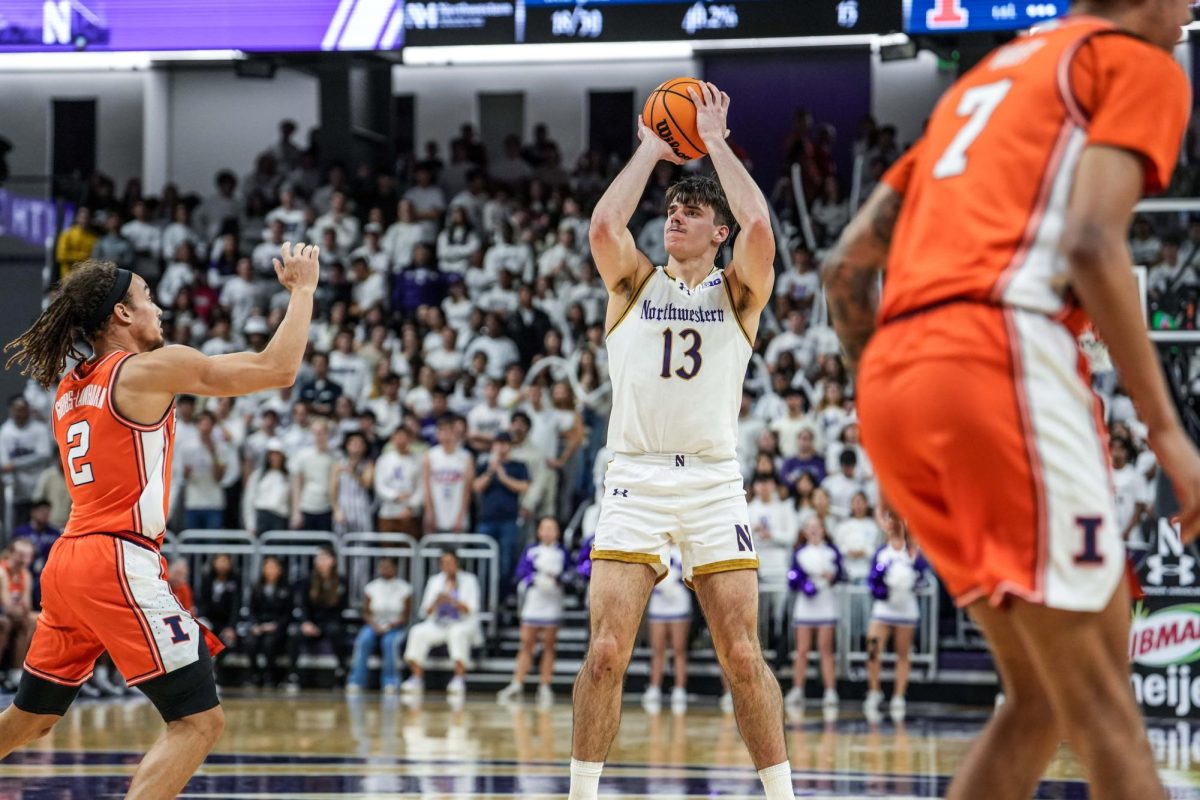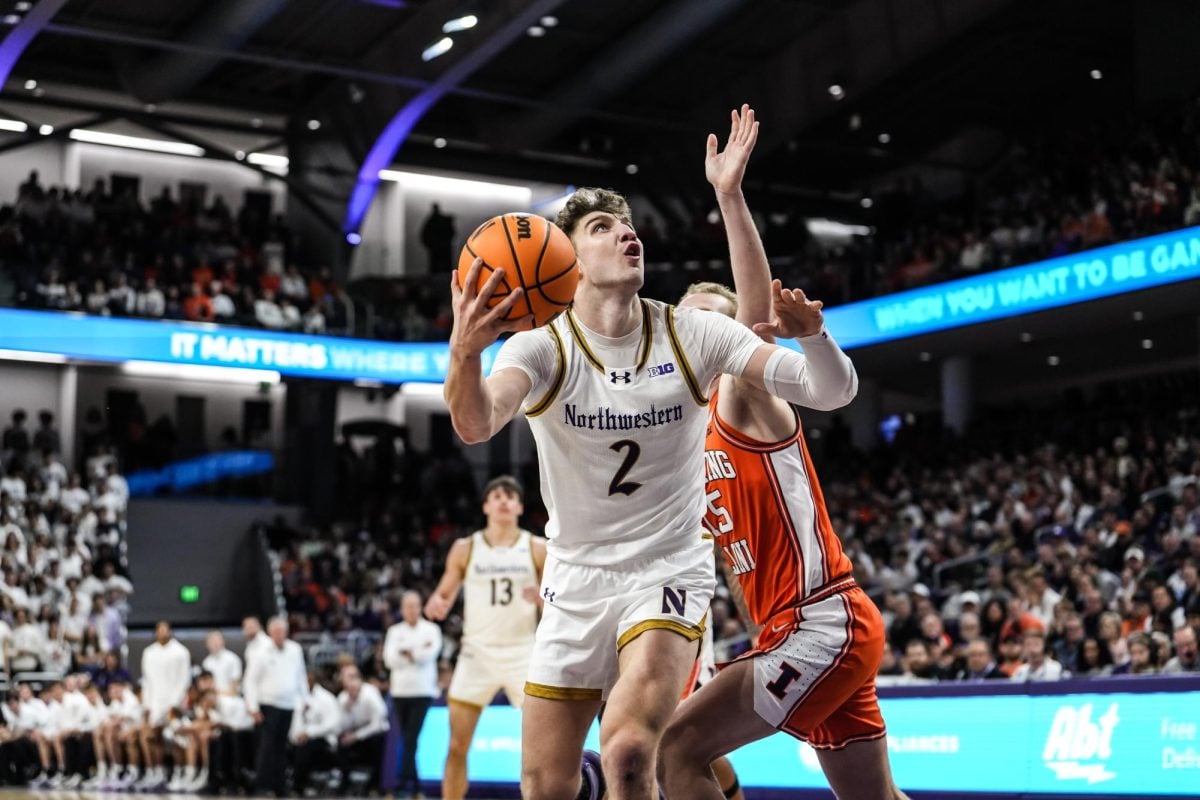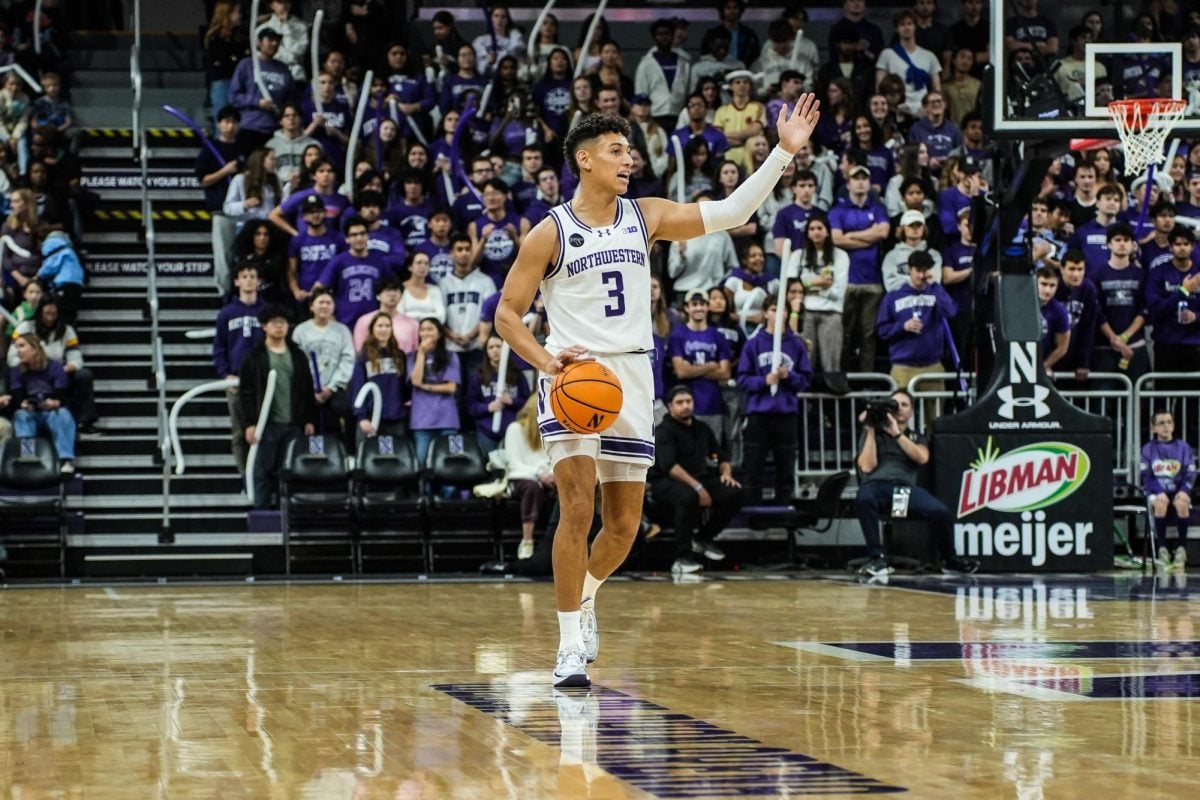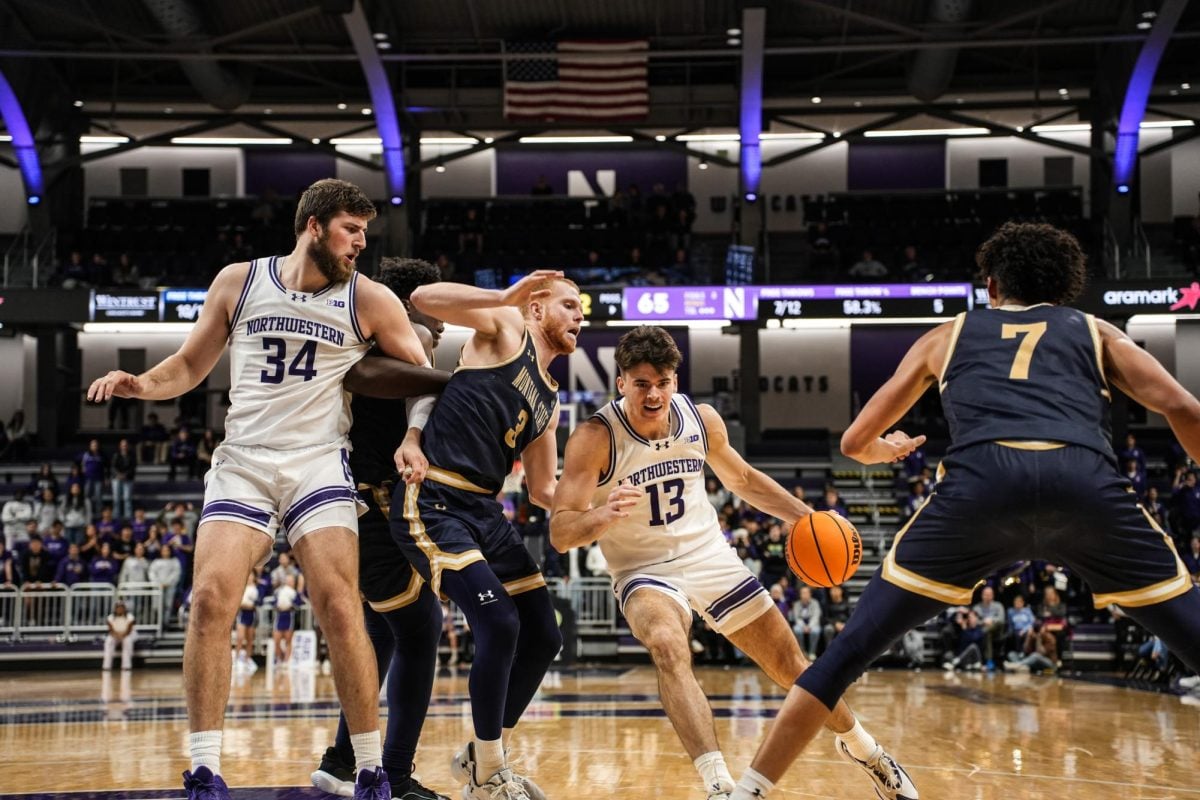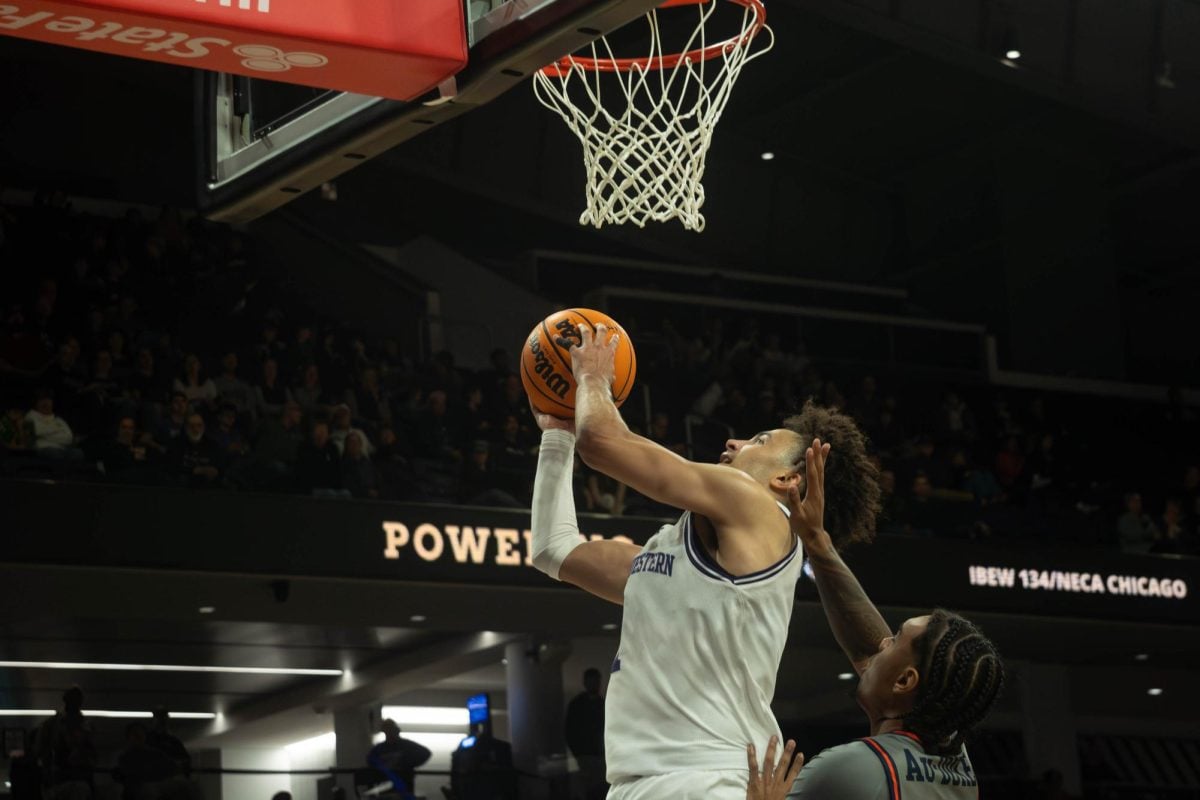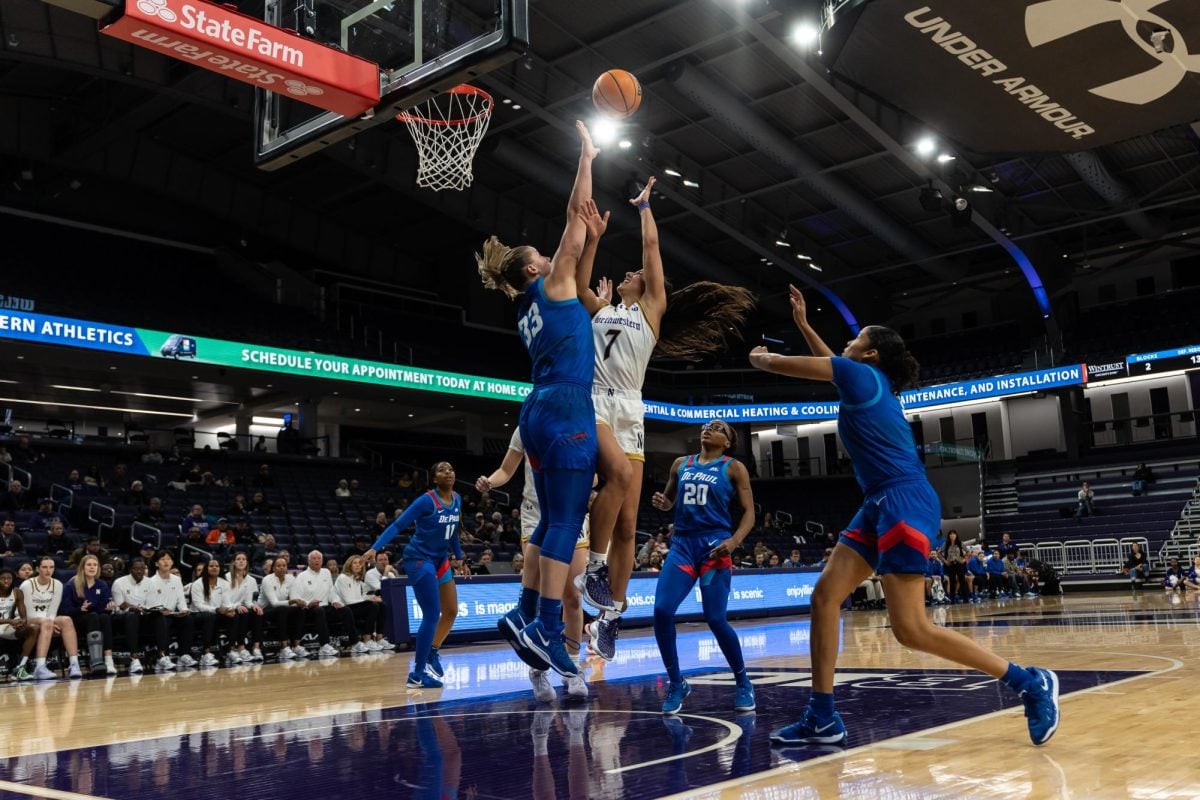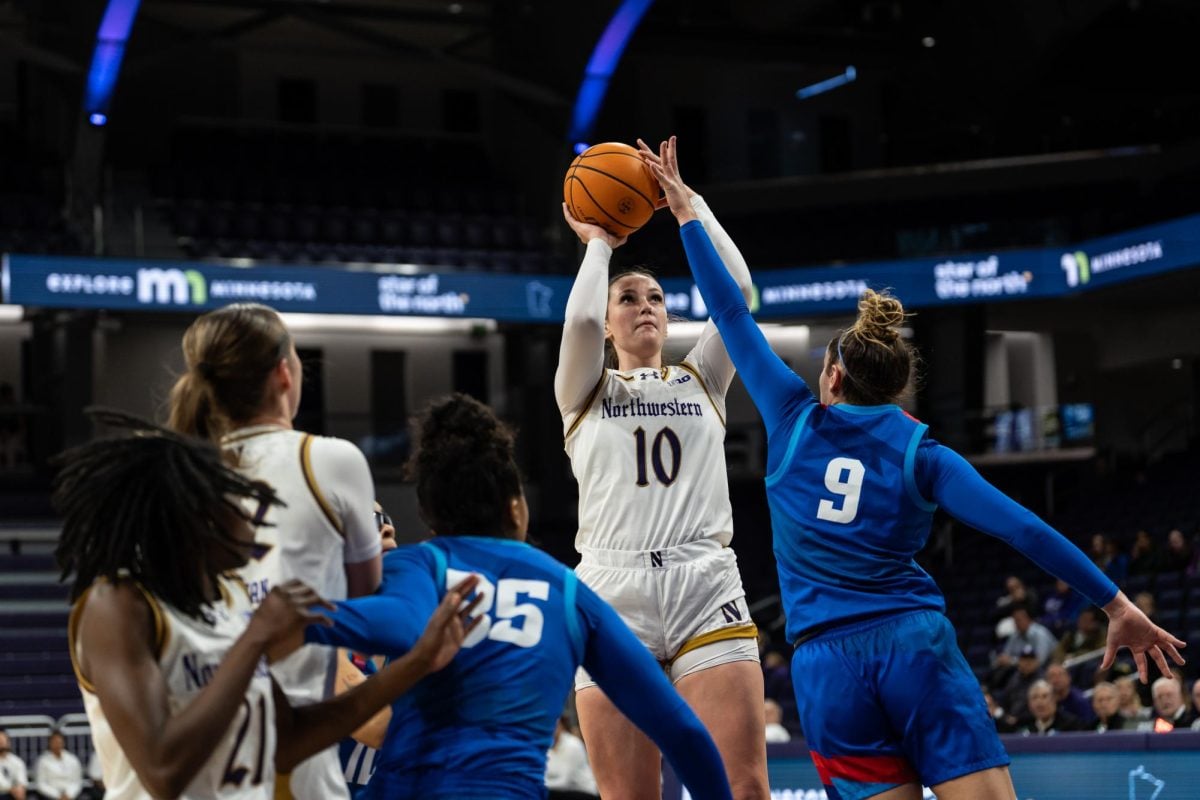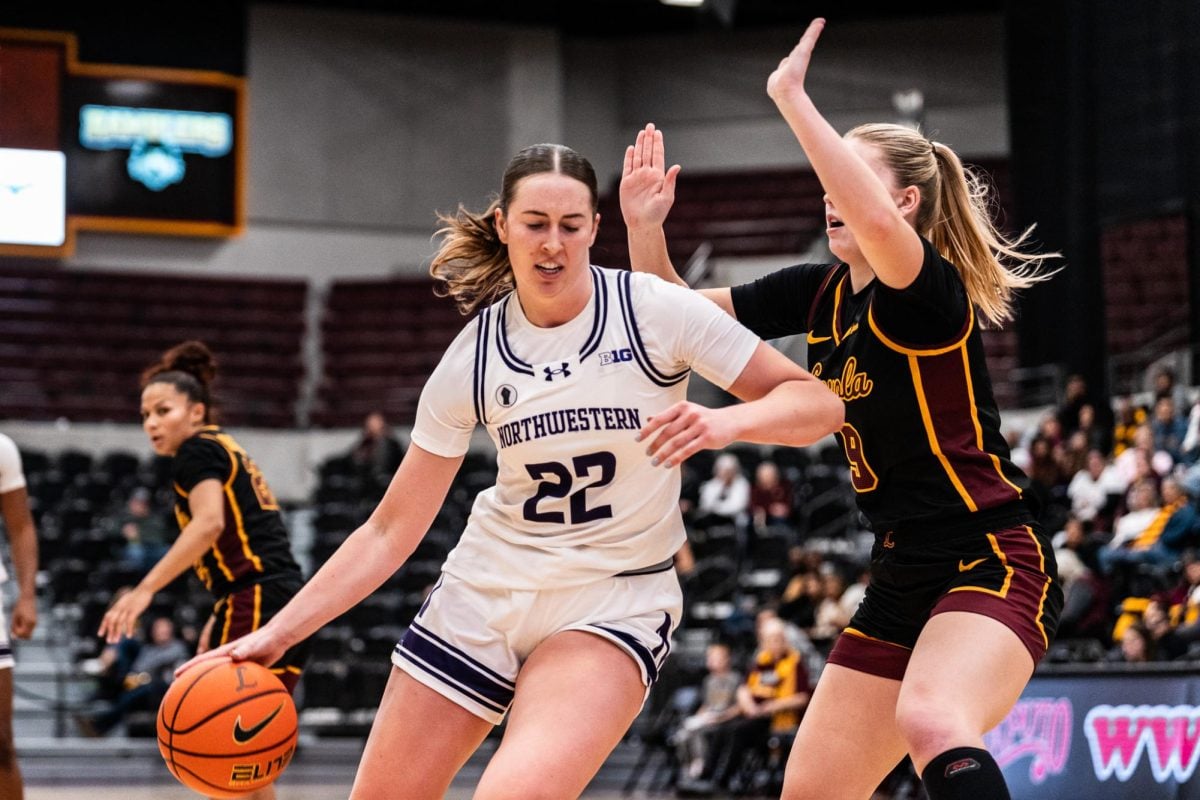Any walk-on envisions how he is going to score his first career points. For freshman Omar Jimenez, that moment was even more special.
The Kennesaw, Ga. native entered Northwestern’s Nov. 29 game against Georgia Tech with very little college basketball experience – none, to be exact. In front of his high school teammates, friends and family, Jimenez hit a jumper with 54 seconds left in the game, scoring the first 2 points of his college career.
“It was exciting,” Jimenez said of playing in Atlanta. “I never imagined I would get the opportunity to play in Philips Arena. Georgia Tech was my favorite team growing up, so it was surreal to play against them.”
Jimenez is one of two walk-ons on NU’s men’s basketball team and one of many in the entire athletic program. Almost every team at NU has at least one non-scholarship player.
Running back Jacob Schmidt joined the football team as a walk-on as a freshman and was named the starter during his senior season. Junior guard Reggie Hearn is another successful walk-on-turned-starter. After sitting on the bench for the basketball team and not getting any significant minutes for the Cats during his freshman and sophomore campaigns, Hearn was given a scholarship. He has started all 28 games for NU this season and has become a fan favorite for his hard work and dedication.
“It’s been a gradual realization that you’re not just a walk-on anymore,” Hearn told the Big Ten Network. “You belong on this court. You belong with all these big-name players.”
The person who might be the most proud of Hearn and Schmidt is athletic director Jim Phillips. In his fourth full season at the helm of NU’s athletic department, Phillips said he is happy to see players like Hearn and Schmidt succeed at the next level.
“It’s inspirational,” Phillips said. “You find inspiration from their experience and the story that has developed around these players.”
With a lot of talk about student-athlete compensation swirling around college athletics, the non-scholarship players have been largely left out of the discussion. For 2011-12 the cost of attending NU is around $58,000 – more than $200,000 over four years – all of which needs to be paid for by the student-athlete and their family if he or she is not on scholarship.
Phillips and NU President Morton Schapiro have been adamant that the only stipend plan they would support would include all student-athletes and be in the best interest of each, including walk-ons.
Football coach Pat Fitzgerald talked about walk-ons and how he deals with them during his appearance as a panelist in the Feb. 22 sports panel entitled “Beyond the Box Score: Covering College Sports in 2012 and Beyond.” He said he tries to reward athletes for their commitment to the program both on and off the field with scholarships, whether it be for a quarter or an entire year.
Fitzgerald and Phillips agree that walk-ons are a crucial part of any team. Fitzgerald said at the event that walk-ons are “the lifeblood of our program,” and he enjoys seeing players fight for playing time regardless of whether they are on scholarship.
Phillips said non-scholarship players often contribute little things the public may not see.
“They’re invaluable,” Phillips said. “They’re the X factor for all of our programs. They provide so much support for our teams in a way that a lot of times go unnoticed. We’ve really benefited from those types of young men and women in our program.”
‘A welcoming spirit’
Phillips said the success of walk-ons has to do with the culture at NU. He said the Cats might not get the best freshman recruits, but they get the type of people who can succeed regardless of whether they are on scholarship.
“We have been a developmental kind of program,” Phillips said. “We don’t have the finished product as a freshman. What we’re most proud of is the development of those young folks across the sports during the four years that they’re here. That’s a reflection on the types of young people the coaches are recruiting.”
One of the things that has allowed walk-ons to thrive at NU is their interaction with their teammates. Sophomore guard James Montgomery III said he was surprised by how well he was treated by his basketball teammates, which he said has helped to enhance his experience as a walk-on.
“There’s a very welcoming spirit here,” Phillips said. “A culture that I think the coaches deserve as much credit as anyone because of the kind of programs that they built.”
One of Phillips’ many jobs as athletic director is to make sure the school adheres to federal laws governing collegiate athletics, such as Title IX, which requires that males and females receive equal opportunities to play sports. Every player, whether on scholarship or not, counts toward the total number for each gender, and with 486 student-athletes to juggle, it can get difficult. The process is not helped by the coaches who advocate for additional spots for non-scholarship players who they feel will help the team.
Phillips said he talks with coaches before the season starts to see what their plans are for the year, including graduation and walk-ons. That doesn’t stop coaches from arguing their case to Phillips. The athletic director said it happens more often than people would think, so he is used to negotiating.
Nonetheless, having players like Hearn and Schmidt has been a source of inspiration and advice for all walk-ons. Jimenez said he enjoys playing with the team and is trying to soak up every bit of advice he can from Hearn.
“(Hearn’s) been great,” Jimenez said. “He’s sort of an inspiration for me. He told me, ‘When your opportunity comes just be ready and continue to work hard in practice and in the weight room.'”
